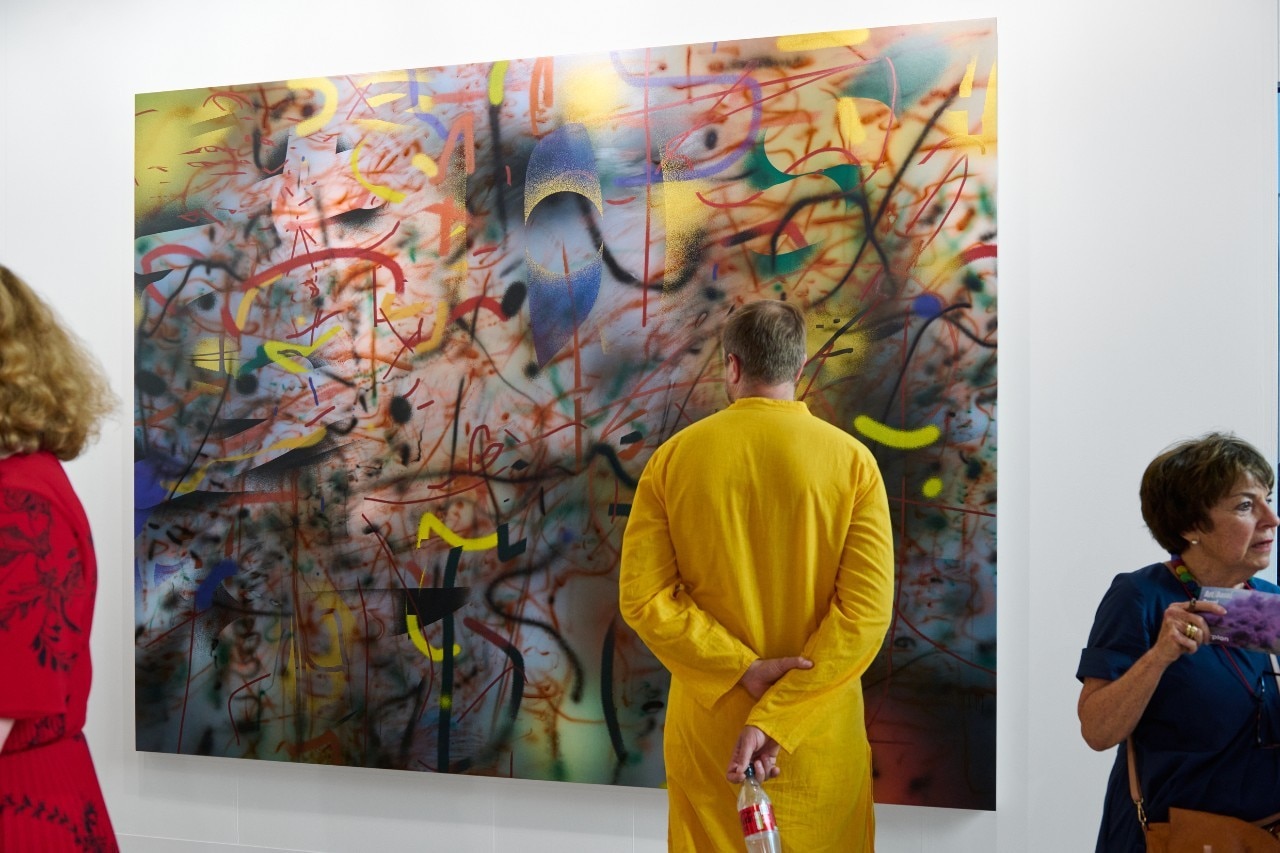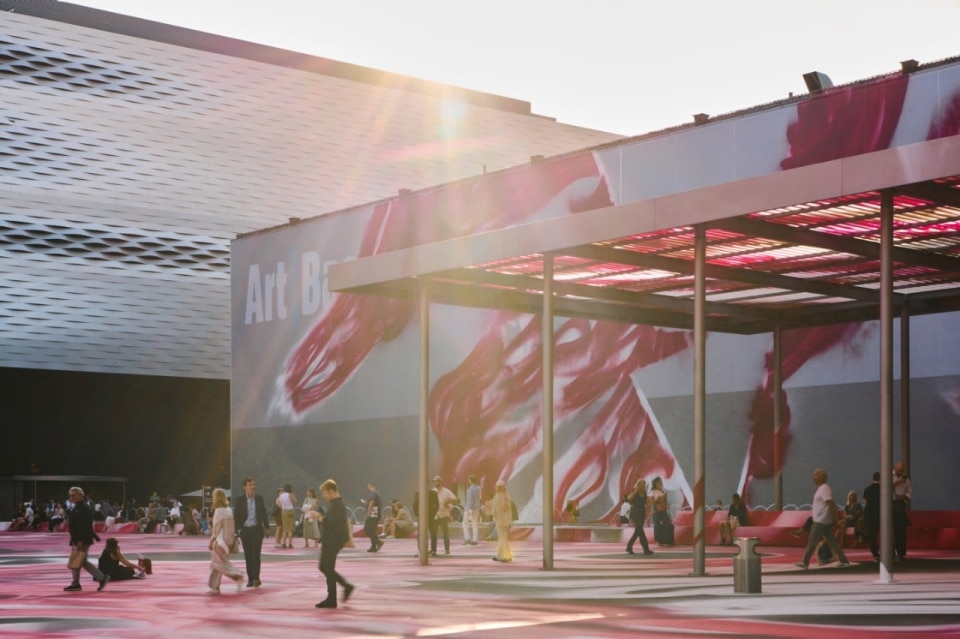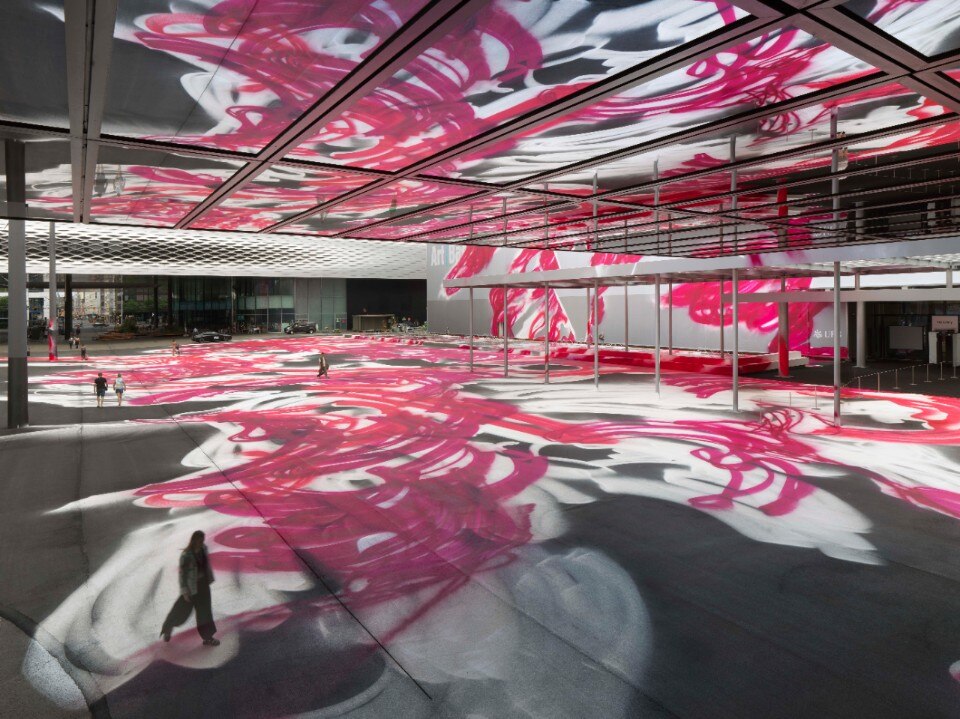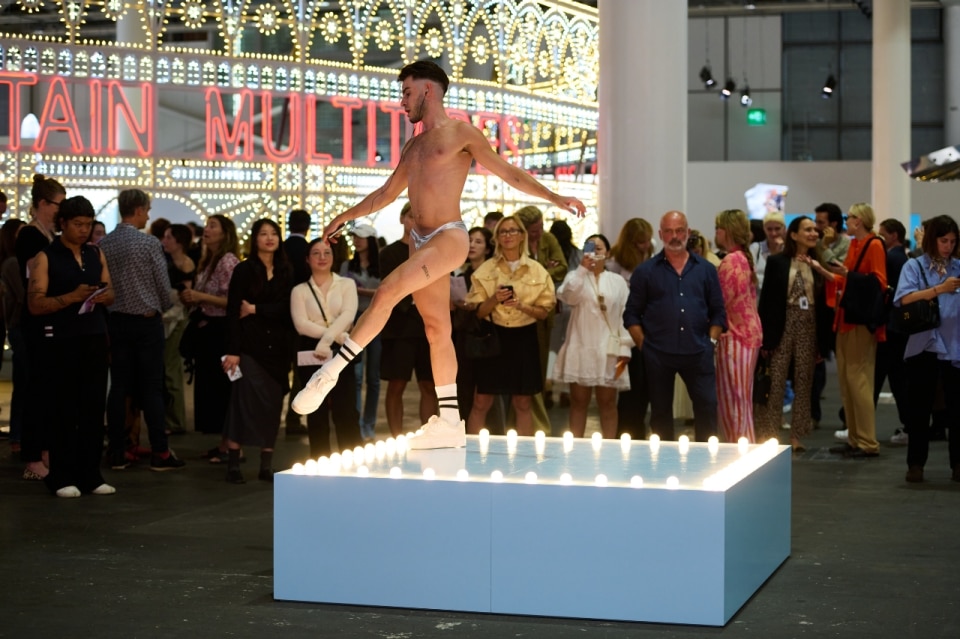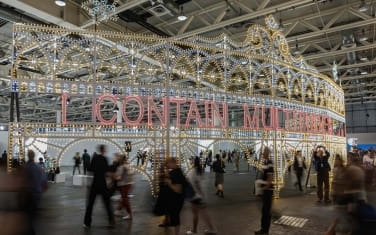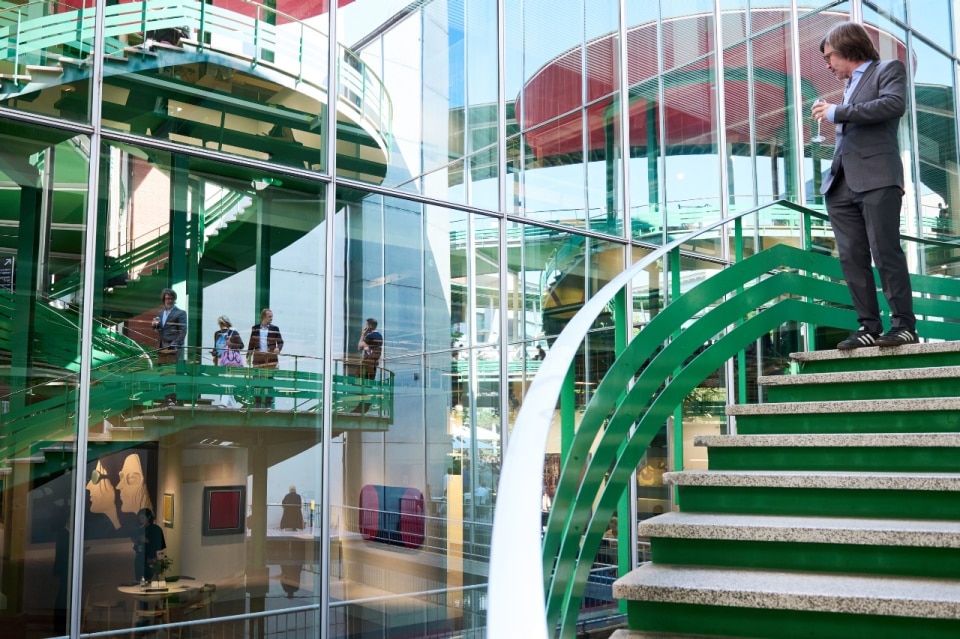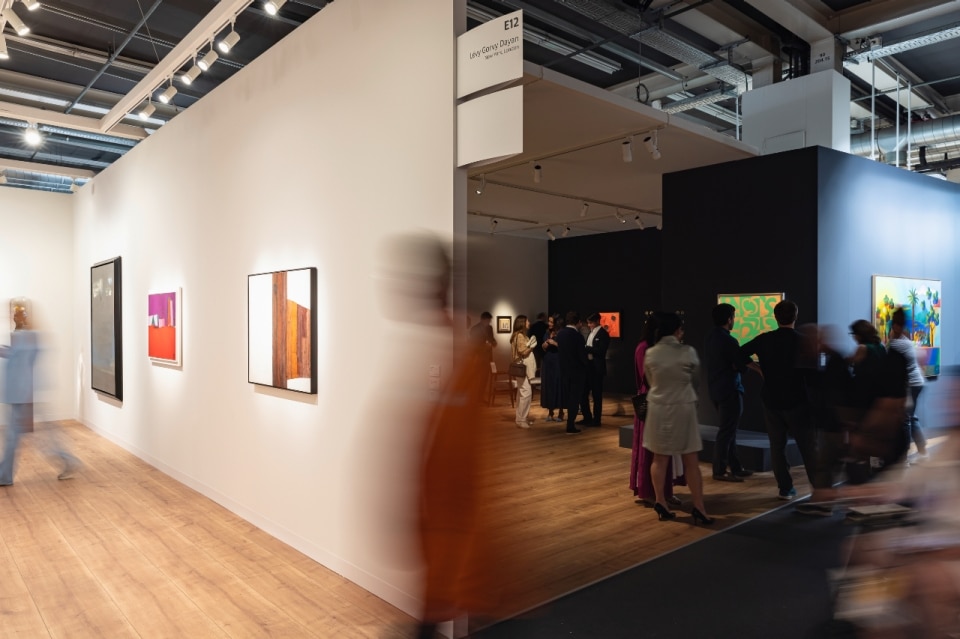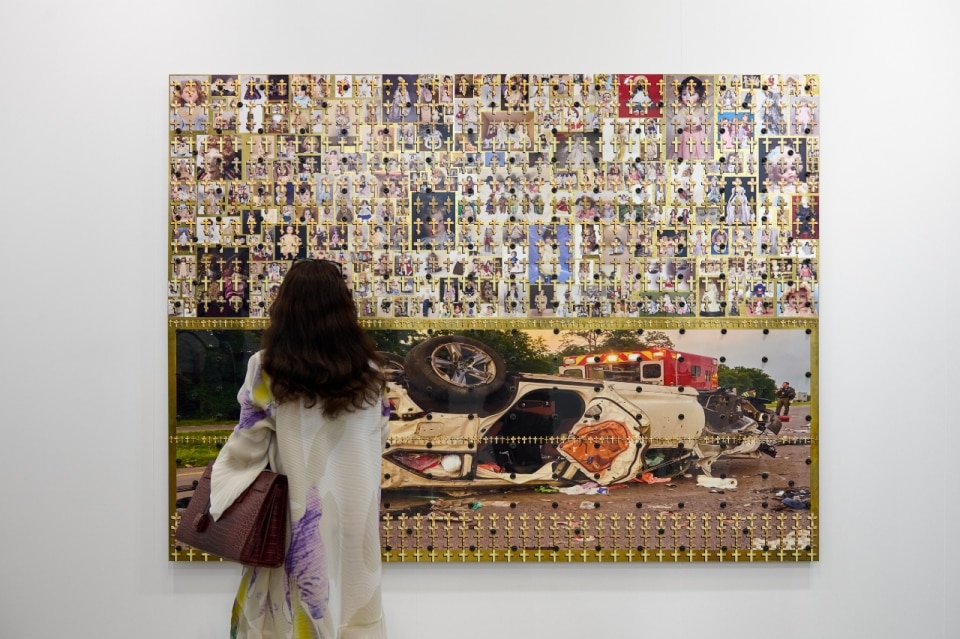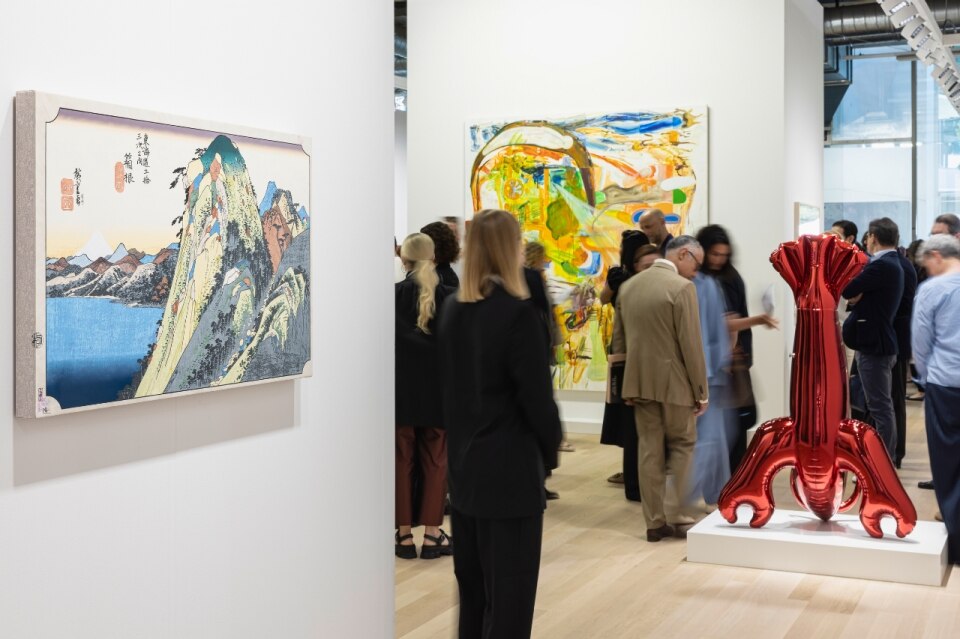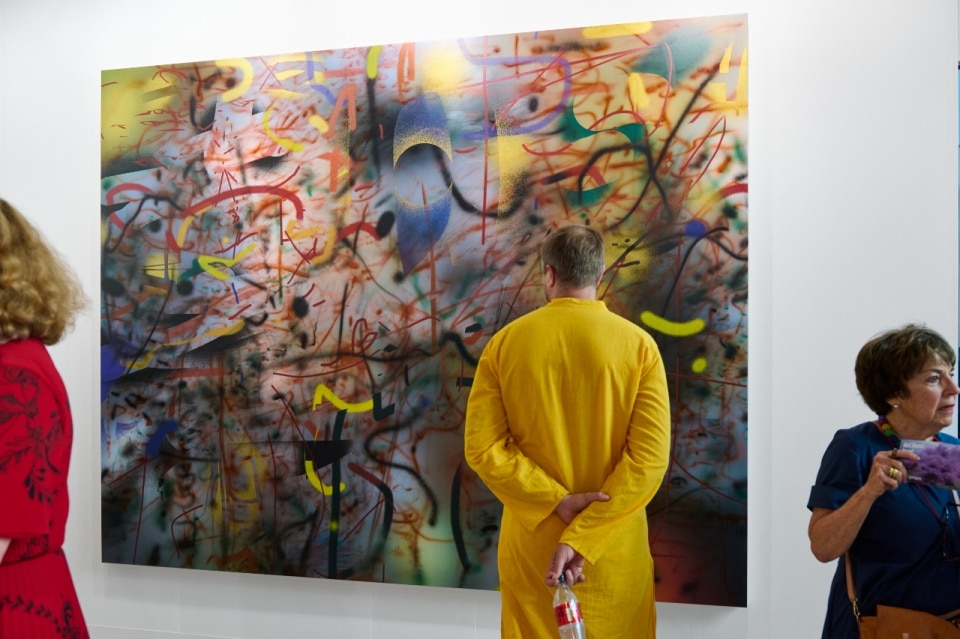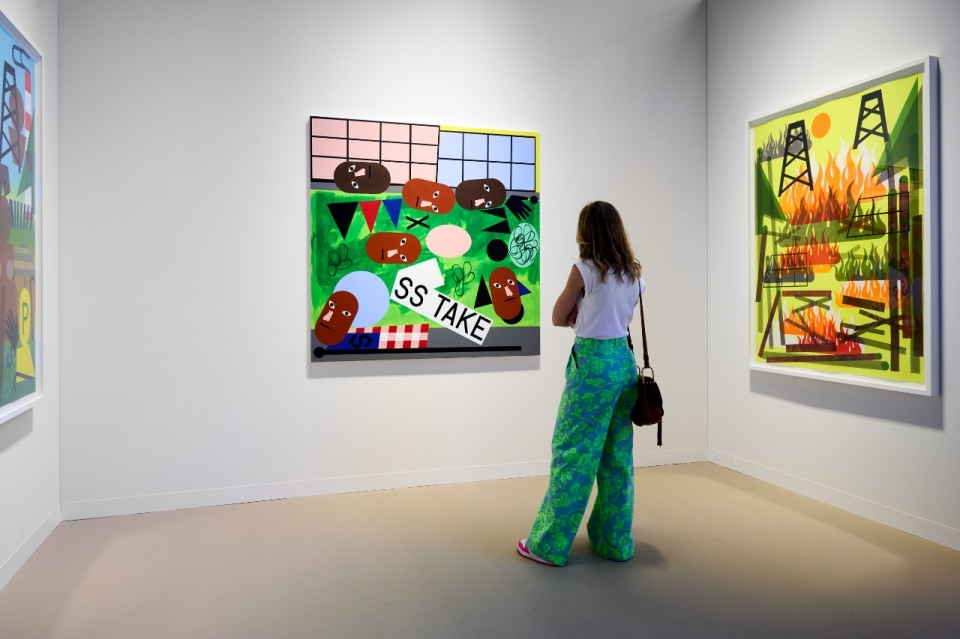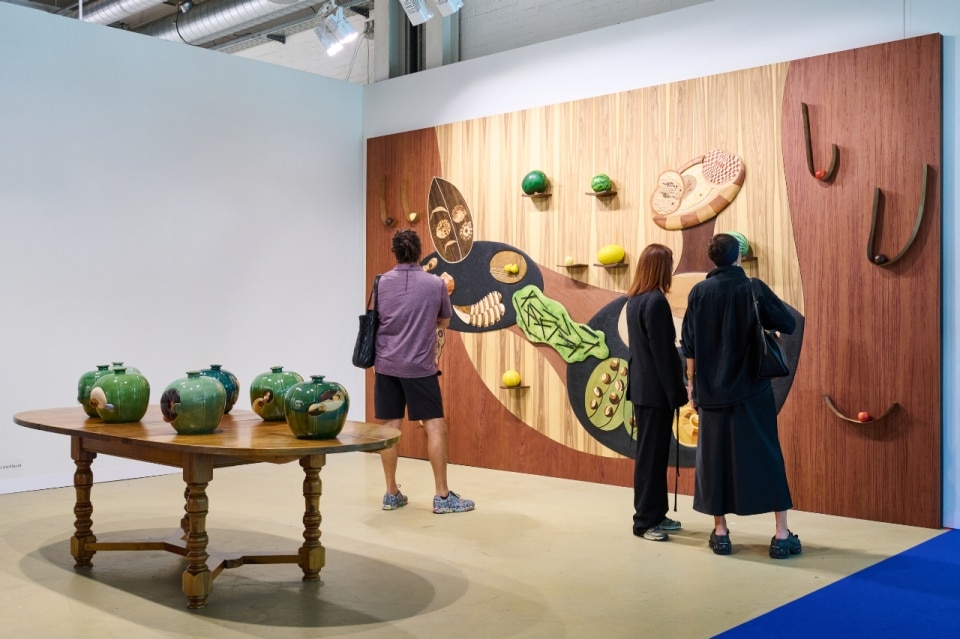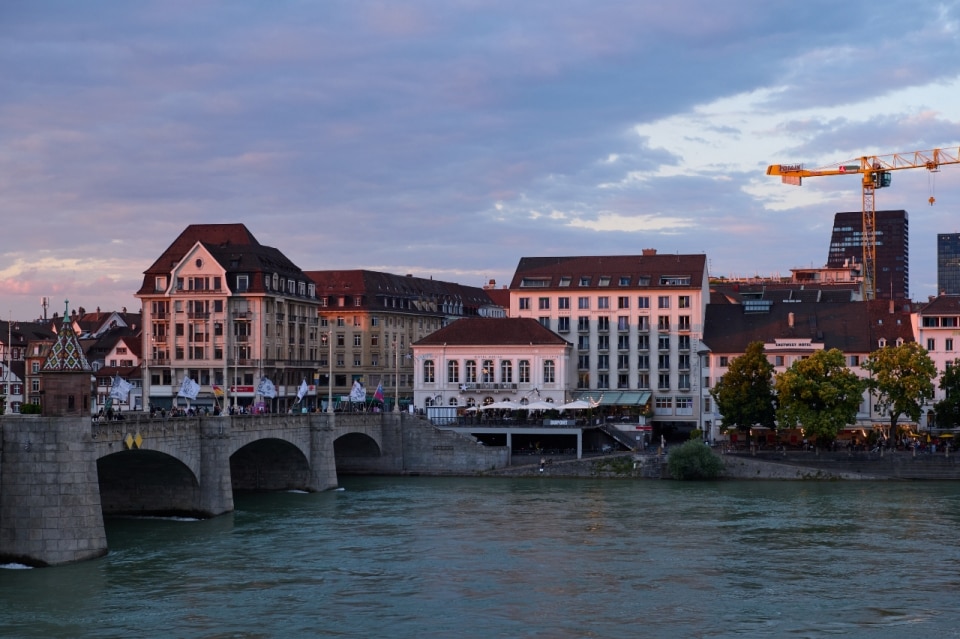Just this summer, we had taken stock of a slowing art market—held back by inflation, geopolitical tensions, and shifting spending priorities. And yet, judging by this year’s sales reports, the 2025 edition of Art Basel has proven that narrative wrong. In uncertain times like these, nothing could be taken for granted—yet the fair of all fairs recorded staggering sales from the very first hours.
With 289 galleries from 42 countries and over 88,000 visitors, the Swiss edition of the global art fair giant reaffirmed its central role on the international stage, delivering results that suggest a renewed confidence in art as a safe haven—at least for those who can still afford it.
Among the many works sold, at least five stood out for their economic value and symbolic weight, helping to shape the narrative of this year’s edition.
Optimism was reignited on day one, when a two-panel painting by David Hockney, Mid November Tunnel (2006), sold for between $13 and $17 million through London’s Annely Juda Fine Art. It was a major deal that set the tone for the week: blue-chip names still hold strong, and when the quality is high, collectors don’t hesitate.
From Ruth Asawa’s delicate hanging sculpture—sold by David Zwirner for $9.5 million—to a Gerhard Richter painting at $6.8 million, the sales pace made it clear that blue-chip works remain the market’s anchor. Two recent pieces by Dana Schutz went for $1.2 million and $850,000 respectively, while a diptych by On Kawara sold for $1.3 million.
The same goes for Hauser & Wirth, which reported two works by Mark Bradford sold at $3.5 million each—one acquired by a prominent American collection. The strong momentum also drew attention to other artists on view, including Fausto Melotti, Piero Manzoni, Nicolas Party ($565,000), and Flora Yukhnovich ($575,000).
Celebrating its 30th consecutive year at the fair, Gagosian capitalized on the strength of its roster with a booth specially curated by Francesco Bonami. The gallery reported sales ranging from $30,000 to over $5 million, with works by Georg Baselitz, Maurizio Cattelan, Rachel Feinstein, Nan Goldin, Damien Hirst, Jamian Juliano-Villani, and Ewa Juszkiewicz.
The European front was just as active. Thaddaeus Ropac—soon to open his new Milan space—announced the sale of Hier jetzt hell, dort dunkel dunkel (2012) by Georg Baselitz for €1.8 million, along with James Rosenquist’s 1966 painting Playmate, sold for the same amount in dollars to a major European museum, and Robert Rauschenberg’s Lipstick (Spread) (1981), which went for $1.5 million.
Xavier Hufkens also reported strong results: a new work by Tracey Emin sold for £1 million, while a rare 1956 painting by Alice Neel drew interest from major historical collectors.
In this context, it’s clear that reputation, relationships, and the ability to consistently offer high-quality work make all the difference.
Below the million-dollar mark, the market moved with reasonable fluidity—especially in the mid-range segment, between $50,000 and $500,000—where many galleries reported a steady flow of sales. Even in this bracket, however, the spotlight was not on speculative newcomers, but rather on artists with institutional backing or solid upward trajectories, often already present in museum collections.
In line with this trend, collectors favored smaller works, works on paper, and rare editions—choices reflecting a more considered approach rather than impulsive bets. According to gallerists, the most responsive sales came from pieces that were immediately legible and aligned with the artist’s established practice: a sign that, in today’s market, clarity and the strength of an artist’s “brand” matter more than surprise.
With the exception of carefully curated booths—particularly appreciated by the press, visitors, and collectors alike—most of the attention remained fixed on high-value sales. One standout example was sans titre, which focused on the work of emerging artist Wei Libo with a clear and poetic approach: a small selection of carefully chosen pieces that offered a coherent glimpse into his creative world, rooted in artisanal techniques and extraordinary craftsmanship. It was a bold move, rewarded with around a dozen sales, in addition to the works exhibited at the fair.
Still, to assume that the numbers and volumes of this edition tell the whole story of the art market would be misleading. As Tim Schneider reminded readers in Il Giornale dell’Arte during the 2024 edition, “when the fireworks go off, it takes a while for the smoke to clear.” Basel has always been a privileged observation point for a very specific segment of the art world, and for that very reason, it serves as a built-in guarantee for collectors choosing to buy in this context.
It’s worth remembering that the art market is a complex, multilayered organism—difficult to decode, shaped by slow shifts, fragmented realities, and dynamics often invisible to those who focus solely on million-dollar transactions.
Not everyone buys the same way, and not everyone sells with the same goals.


